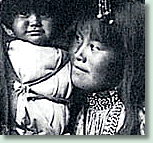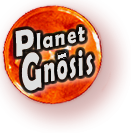
My Granny's Quilt:
In Search of Metaphors for Diversity
Special to Planet Gnosis
Friday, January 27, 2012
MC Issues is one of the final pedagogy courses in your intensive journey toward becoming an emerging professional in education. In this course we will explore the definitions, values, and interpersonal dynamics of culture, multiculturalism, and multicultural education. This website serves as a resource for you to access current and archived course information and read contributions from your classmates.
The semester begins with an examination of self. You will have the opportunity to share who you are by writing a poem as part of the ABC Who Are We? assignment.
Your second task will ask you to look at your students and then go about the task of discovering who they are, each and every one.
Your third assignment will give you the chance to choose a project from a "plethora" of tasty options on the McMenu.
MC Step Out will be your final task, an occasion for you to "step out" of your comfort zone and step into the multi-faceted world of your students and community.
So, the journey through your study of Multicultural Issues begins with you and ends with the community you serve. By course's end, you will have gained a better understanding of multiculturalism and why this sometimes controversial and always important facet of today's classrooms is an important topic for teacher professionals to master.
In my reflections on this semester's goals, I sought a metaphor or visual image to express my understanding of the concept multicultural. I drifted back to my childhood and the summer vacations I spent with my father's mother, Tacy Farmer Alexander. She was a quilter who carried a white shirt box with her whenever she visited. Every female "worth their salt" at that time had a sewing machine and knew how to use a needle and thread, so most of our clothes were designed and crafted by mothers, sisters, aunts, and grandmothers. As a result, lots of scraps of material were saved and reused — most often "pieced" together to make a quilt.
Granny created wonderful quilt tops from her family's scraps. I could look at a pattern and see my dad's housecoat, my brother's pajamas, a blouse sewn by my aunt, a dress from my mama's machine. Granny crafted pieces of newspaper into patterns, pinned them meticulously onto the colorful remnants of our former wardrobes, and hand-stitched these pieces into stars and flowers and cabins.
After she finished the quilt top, she gave it to her kids. The tops were taken to a quilter for the final stage of production — with cotton batting added for warmth and a cotton "backing" applied to secure the batting, with the edges bound using bias tape. Voila! Working together, we created little domestic works of art, each reflective of our family's resourcefulness, reminiscences, creativity, and love.
So, for me, my grandmother's quilt tops reflect my definition of multicultural: creating something beautiful, useful, and durable from a diverse and eclectic collection of individual pieces of cloth, gathered from hither and yon, and then assembled with love, creativity, and patience.
As you step into another 21st century classroom, ask yourself: What metaphor can I create to represent the diversity I see before me? Your answer will put you on track toward a fuller understanding of the fascinating thing called multicultural.
Freddie A. Bowles, Ph.D.
Associate Professor of Foreign Language Education
Curriculum and Instruction
College of Education and Health Professions
Faculty Advisor: Native American Student Association
University of Arkansas
312 Peabody Hall
Fayetteville, AR 72701
479-575-3035
fbowles@uark.edu
















